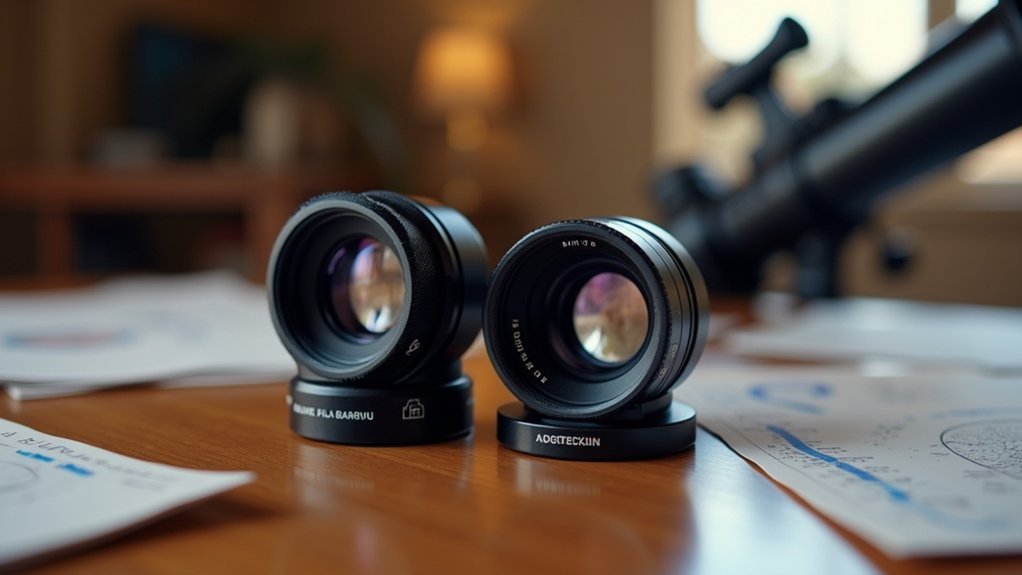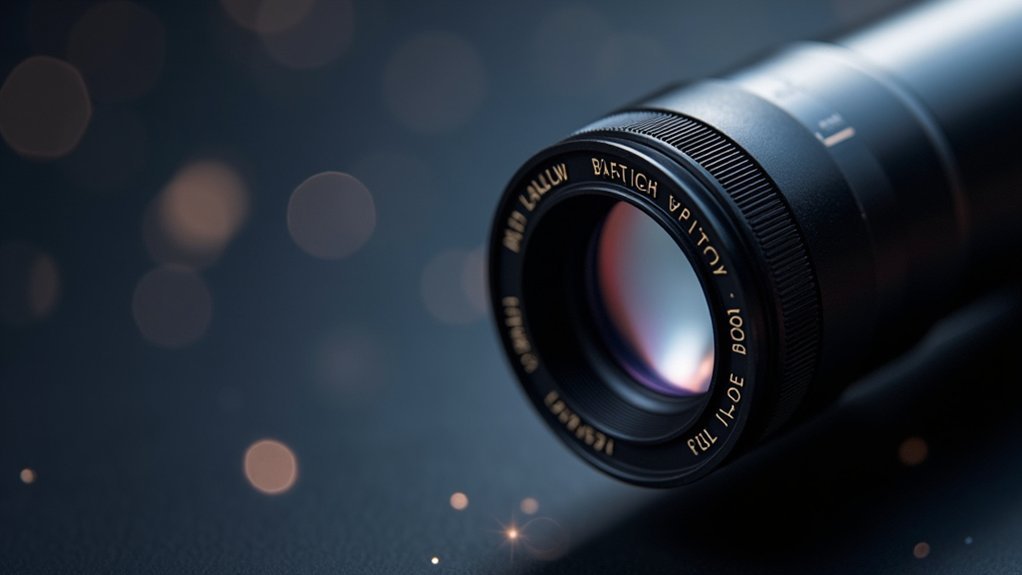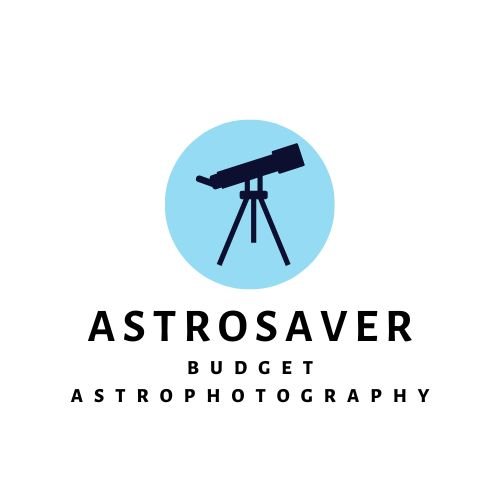Barlow lenses can partially flatten fields by changing the angle of light from your telescope’s objective, reducing field curvature. While primarily designed for magnification, they provide a secondary benefit of improving edge-of-field sharpness. Their effectiveness varies based on design and placement in your optical train, with shorty Barlows offering better correction than full-length models. Unlike dedicated field flatteners, Barlows require careful positioning for ideal results. The complete picture reveals fascinating optical compromises and solutions.
What Does A Barlow Lens Actually Flatten Fields?

While many amateur astronomers use Barlow lenses primarily for magnification, these optical accessories also serve another important function: field flattening. When properly paired with your eyepieces, a Barlow lens can reduce field curvature, improving edge-of-field sharpness and overall image quality.
The effectiveness of a Barlow lens in field flattening depends on its design and placement within your optical system. Moving it closer to the eyepiece enhances its ability to reduce curvature. Different eyepieces exhibit varying levels of field curvature, and your Barlow can either counteract or enhance this effect.
Notably, shorty Barlow lenses produce about twice the field curvature correction compared to full-length models.
Though Barlows act as field dividers rather than universal correctors, they can greatly improve your viewing experience by addressing specific curvature issues.
Understanding Field Curvature in Optical Systems
Because telescopes project images onto a curved focal plane rather than a flat one, field curvature represents one of the most common optical challenges astronomers face.
When you’re struggling with edge-of-field sharpness, Barlow lenses can offer a solution due to their negative field curvature characteristics.
Unlike positive lenses, Barlows alter the angle of the light cone from your telescope’s objective, effectively counteracting the natural curvature in the optical system. This is why they can dramatically improve image quality when paired with the right eyepiece.
However, not all Barlows perform equally—shorty versions exhibit approximately twice the field curvature of full-length models. The effectiveness depends on both your specific eyepiece’s curvature characteristics and the Barlow’s design.
Understanding this interaction helps you create ideal combinations for flatter, sharper fields of view.
The Physics Behind Barlow Lenses and Focal Planes

The Petzval surface of your optical system isn’t automatically corrected when you add a Barlow lens, as these curved focal planes result from cumulative effects throughout the entire optical train.
Your Barlow’s diverging lens properties can modify the light cone’s angle, potentially reducing field curvature when paired with compatible eyepieces.
The interaction between your Barlow and eyepiece creates a complex optical relationship where the placement and specific characteristics of each component determine whether field curvature improves or worsens in your final image.
Petzval Surface Mechanics
Visual complexity underlies the relationship between Barlow lenses and focal planes through what’s known as the Petzval surface. This curved focal plane forms when light passes through multiple lenses, with each element—including your Barlow lens—contributing to the overall curvature.
When you integrate a Barlow lens into your optical system, it doesn’t simply magnify the image; it can potentially reduce the Petzval surface’s curvature, effectively flattening the field depending on the eyepiece characteristics.
However, this effect isn’t universal. The Barlow’s placement in your optical train considerably impacts its performance since the Petzval curvature accumulates throughout the system.
For ideal optical performance, you’ll need to understand how your specific Barlow interacts with your objective and eyepiece combination, as these relationships determine whether field flattening actually occurs.
Optical Train Interactions
When examining how Barlow lenses function within a telescope system, we must consider the physics governing their interactions with other optical components. The Barlow lens’s position in your optical train critically affects its field curvature correction capabilities.
- Positioning matters – Moving your Barlow closer to the eyepiece enhances its field-flattening effects while maintaining system magnification.
- System compatibility – The Barlow’s contribution to Petzval surface curvature must complement your specific eyepiece characteristics to be effective.
- Complete system approach – Curvature corrections aren’t universal but depend on the integrated relationship between your objective, Barlow, and eyepiece.
Understanding these interactions helps you optimize image quality, particularly at the field edges where curvature issues are most apparent.
The effectiveness of a Barlow isn’t isolated—it’s determined by how it works within your complete optical system.
Negative Lens Effects on Petzval Surface
You’ll find that Barlow lenses—as negative optical elements—influence the Petzval surface curvature by counteracting positive lens contributions in your telescope system.
Their placement affects how effectively they flatten the field, often reducing curvature when properly matched with your eyepiece configuration.
However, you should consider that Barlows aren’t universal field flatteners, as their effectiveness depends on your specific optical setup’s characteristics.
Subheading Discussion Points
Although telescope enthusiasts often focus on the magnification benefits of Barlow lenses, their impact on the Petzval surface represents a critical but frequently overlooked optical consideration.
The way a Barlow lens interacts with your telescope’s objective can greatly alter the curvature of the Petzval surface, affecting overall optical performance.
When considering field flattening effects, you’ll need to understand:
- Not all telescope designs respond identically – Barlows provide varying degrees of field flattening depending on the optical system’s configuration.
- The cumulative nature of Petzval curvature means each lens contributes to the overall effect.
- Precise lens-to-lens distances critically determine how effectively a Barlow will flatten your field.
Remember that while Barlows can help reduce focal plane curvature, they don’t universally correct Petzval surface issues across all telescopes.
Curvature Correction Mechanism
The seemingly paradoxical nature of Barlow lenses becomes clear once you understand their fundamental optical properties as negative lens elements. When properly positioned in your optical train, a Barlow lens can contribute to field flattening by counteracting the positive curvature typically produced by telescope objectives.
| Optical Component | Curvature Contribution | Effect on Petzval Surface |
|---|---|---|
| Telescope Objective | Positive | Creates curved field |
| Barlow Lens | Negative | Reduces overall curvature |
| Eyepiece | Variable | Can enhance or diminish correction |
This curvature correction mechanism works because the Barlow modifies the overall Petzval surface of your optical configuration. You’ll find the effectiveness varies based on the specific characteristics of your equipment and the Barlow’s position relative to your eyepiece. It’s not a universal solution, but when matched with compatible components, it can greatly improve edge-of-field performance.
Comparing Barlow Lenses With Dedicated Field Flatteners

When examining optical accessories for astronomy, many observers confuse the functions of Barlow lenses and field flatteners.
While a Barlow lens can potentially help reduce field curvature by altering the light cone from your objective, dedicated field flatteners are specifically engineered for this purpose.
Key differences include:
- Purpose – Barlows primarily increase magnification while field flatteners specifically correct the Petzval surface across the entire field of view.
- Consistency – Field flatteners provide more reliable edge-of-field sharpness compared to Barlows, which vary in effectiveness depending on your optical system and eyepiece characteristics.
- Positioning – A Barlow’s field-flattening effect changes with its placement in the optical train, whereas dedicated flatteners work efficiently regardless of position.
Understanding the optical prescriptions of both accessories will help you select the right tool for your specific needs.
Practical Results: Testing Barlows With Different Telescopes
While theoretical comparisons are informative, real-world testing provides the most compelling evidence of how Barlow lenses perform across different optical systems.
Our tests revealed that field curvature reduction varies greatly depending on your telescope and eyepiece combination.
Field curvature reduction is highly telescope and eyepiece dependent, requiring individual testing for optimal results.
Shorty Barlows (around -70mm focal lengths) consistently showed approximately twice the field curvature of full-length models, limiting their effectiveness in certain setups.
Surprisingly, improvements in edge-of-field sharpness often exceeded what we’d expect from magnification alone, highlighting the complex interaction between Barlows and different telescopes.
Position within the optical train doesn’t affect field curvature correction, though placing the Barlow closer to the eyepiece sometimes enhances results.
If you’re considering a Barlow for field flattening, visual observation testing with your specific equipment is essential for determining actual performance.
Barlow Positioning and Its Impact on Field Flatness

You’ll find that a Barlow’s position relative to your eyepiece critically affects field flatness, with closer placement often enhancing the reduction of field curvature.
The Barlow alters the light cone’s angle from your objective, potentially improving edge-of-field sharpness depending on your specific eyepiece design.
This virtual focal shift creates opportunities for fine-tuning your optical system, as the altered focal plane geometry can compensate for curvature issues inherent in certain telescope configurations.
Barlow Placement Matters
The position of a Barlow lens within your optical system plays an essential role in its field-flattening capabilities.
Moving it closer to your eyepiece can greatly enhance field curvature reduction, altering how light cones interact with your optical train. The curvature of the objective works in conjunction with Barlow placement to determine overall field flattening effectiveness.
When adjusting your Barlow lens positioning, remember:
- Distance changes affect system magnification while maintaining consistent field curvature characteristics
- Fixed spacings within the optical system directly influence the field-flattening results you’ll achieve
- Different Barlow designs interact uniquely with various eyepieces, sometimes adding unwanted curvature rather than reducing it
You’ll need to experiment with placement to find the ideal position for your specific combination of equipment.
Virtual Focal Shift
When inserting a Barlow lens into your optical train, you’re creating what astronomers call a “virtual focal shift” – fundamentally moving the focal point of your telescope without physically changing its length. This shift alters how light converges through your optical system, directly impacting field curvature.
Positioning your Barlow closer to the eyepiece maintains its field flattening capabilities while affecting magnification. The Barlow modifies the light cone angle from the objective, potentially improving edge sharpness by adjusting the focal plane’s curvature.
For ideal field flattening results, you’ll need to understand how your specific Barlow interacts with your eyepiece. Experiment with different placement configurations, as fixed spacings can either enhance or diminish field flattening effectiveness.
Remember that the virtual focal point changes with Barlow position, allowing you to optimize both magnification and field flatness.
Short vs. Full-Length Barlows for Curvature Correction
While selecting a Barlow lens for your telescope setup, understanding the difference between short and full-length models becomes essential for proper field curvature correction.
Shorty Barlows with -70mm focal lengths exhibit approximately double the field curvature of their full-length -140mm counterparts, greatly impacting your optical system’s performance.
When considering your options:
- Field curvature characteristics – Full-length Barlows typically provide better field flattening capabilities than shorty versions.
- Eyepiece compatibility – Match your Barlow’s curvature characteristics with your eyepiece for ideal correction.
- System integration – Some Barlows can effectively cancel eyepiece field curvature while others might compound existing issues.
Your choice between shorty and full-length Barlows ultimately determines image quality at the edges of your field of view.
Eyepiece-Barlow Combinations for Optimal Field Flatness

Beyond choosing between shorty and full-length models, achieving ideal field flatness requires careful matching of your Barlow lens with compatible eyepieces.
You’ll need to understand both your eyepiece’s inherent field curvature and the Barlow’s optical design to create effective pairings.
Not all Barlows perform equally—some compensate for field curvature while others might inadvertently increase it.
The distance between the Barlow lens and the eyepiece’s focal plane is critical; positioning the Barlow closer often enhances its curvature-correcting abilities.
For best results, conduct empirical testing with different eyepiece-Barlow combinations.
Each pairing produces unique optical characteristics that affect field flatness.
Alternatively, ray-tracing methods can help predict which combinations will deliver the flat, edge-to-edge sharp views you’re seeking.
Budget Solutions for Astrophotography Field Flattening
For astrophotographers working with limited budgets, Barlow lenses offer a surprisingly effective alternative to expensive dedicated field flatteners. When properly positioned in your optical train, an inexpensive Barlow can markedly reduce field curvature, improving image quality and edge-of-field sharpness.
Amateur astrophotographers can maximize this cost-effective solution by:
- Selecting compatible Barlow lenses from manufacturers like GSO that pair well with your existing eyepieces.
- Experimenting with the separation distance between the Barlow and sensor to optimize the flattening effect.
- Testing different Barlow-eyepiece combinations to achieve the best results for your specific telescope setup.
This approach is particularly beneficial for refractors, which often suffer from inherent field curvature.
You’ll enjoy clearer wide-field views without breaking the bank.
Frequently Asked Questions
What Is the Disadvantage of a Barlow Lens?
Barlow lenses can degrade image quality by introducing field curvature, may not work well with all eyepieces, and can increase spherical aberration. You’ll also lose light transmission and potentially sharpness when using them.
What Is the Point of a Barlow Lens?
A Barlow lens increases your telescope’s magnification without buying extra eyepieces. You’ll get higher power views while also potentially improving image quality by reducing field curvature and enhancing edge sharpness in your observations.
Why Does a Barlow Lens Save an Astronomer Lots of Money?
A Barlow lens saves you money because you’ll need fewer eyepieces. It doubles or triples your existing eyepieces’ magnification, effectively giving you multiple focal lengths from just one purchase.
Does a Barlow Reduce Chromatic Aberration?
No, a Barlow lens doesn’t inherently reduce chromatic aberration. You’ll find that while modern Barlows with ED glass can minimize it, they don’t directly correct this issue in your telescope’s optical system.
In Summary
When you use a Barlow lens, you’re actually getting minimal field flattening as a side effect of its negative lens design. It slightly reduces the Petzval curvature but isn’t primarily designed for this purpose. For true flat-field astrophotography, you’ll need a dedicated field flattener. However, proper Barlow positioning and eyepiece pairing can help mitigate some curvature in visual observing on a budget.





Leave a Reply